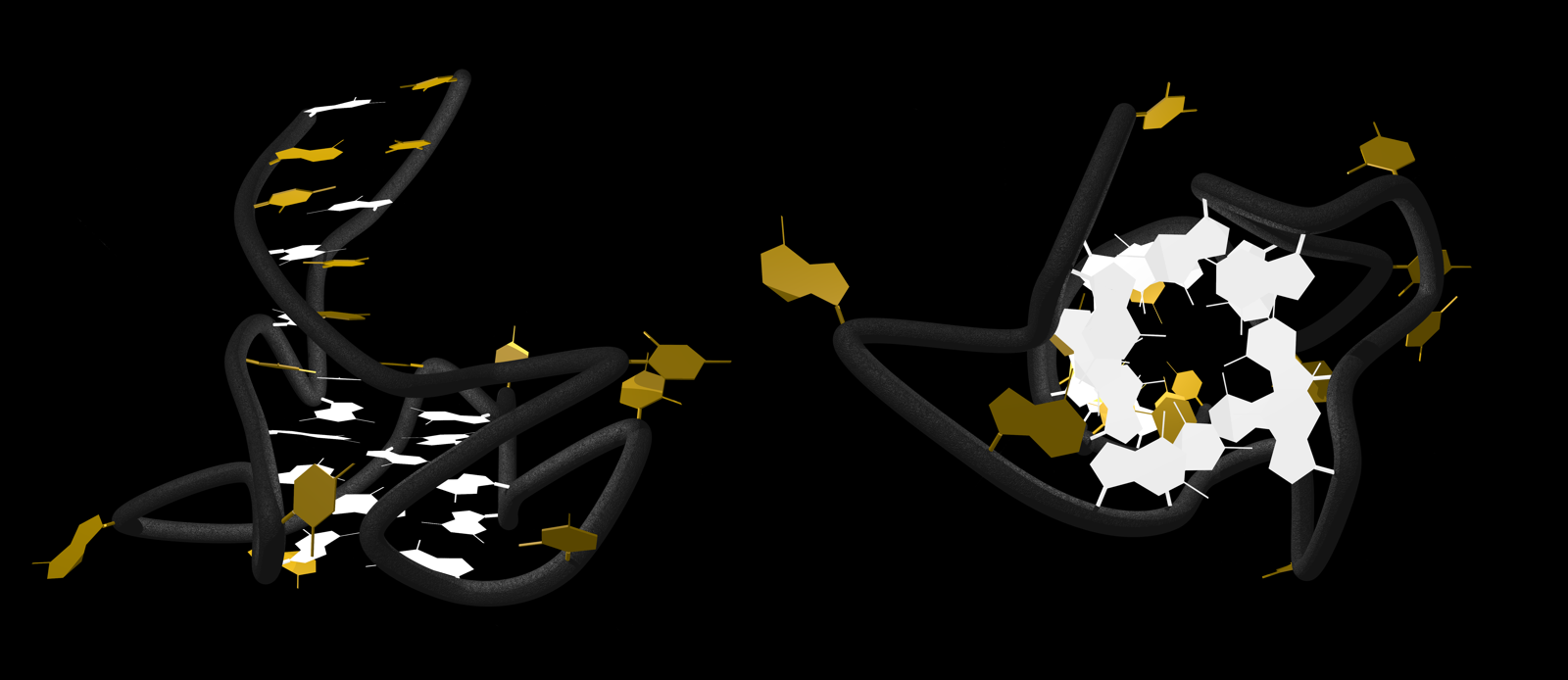
RNA G quadruplexes – only a nuisance?
RNA-molecules are very versatile and can form, apart from standard Watson-Crick base paired double helices, all other kinds of secondary structures. One particularly prominent feature are G-quadruplexes, where four guanosine moieties are reacting with each other in non-Watson-Crick pairings. Such structures are very stable in vitro, in particular in the presence of potassium ions in physiological concentrations. Junjie U. Guo and David P. Bartel now analyzed the distribution of respective sequence motifs and the actual realization of G quadruplexes in eukaryotes and prokaryotes.
Once formed, RNA G quadruplexes prevent reverse transcription of genes and protect nucleotides against methylation. These features were used by Guol and Bartel to screen various prokaroytic and eukaryotic genomes for the presence of RNA G quadruplexes both under in vitro and under in vivo conditions. While the authors found large numbers of sites in eukaryotic genomes able to form RNA G quadruplexes in vitro, this potential was not realized under in vivo conditions. Apparently eukaryotic cells have mechanisms preventing RNA G quadruplexes from forming inside cells. In the case of prokaryotic cells, on the other hand, no sequences allowing the formation of RNA G quadruplexes were found, suggesting a strong negative selection against such motives.
The structure of the RNA G quadruplex presented here has been elucidated by Phan et al., in 2011 and has been deposited in the protein database as 2LA5.
Sources: Junjie Guo and David Bartel Science, DOI: 10.1126/science.aaf5371
Pham et al.,: Protein Data Bank: 2LA5